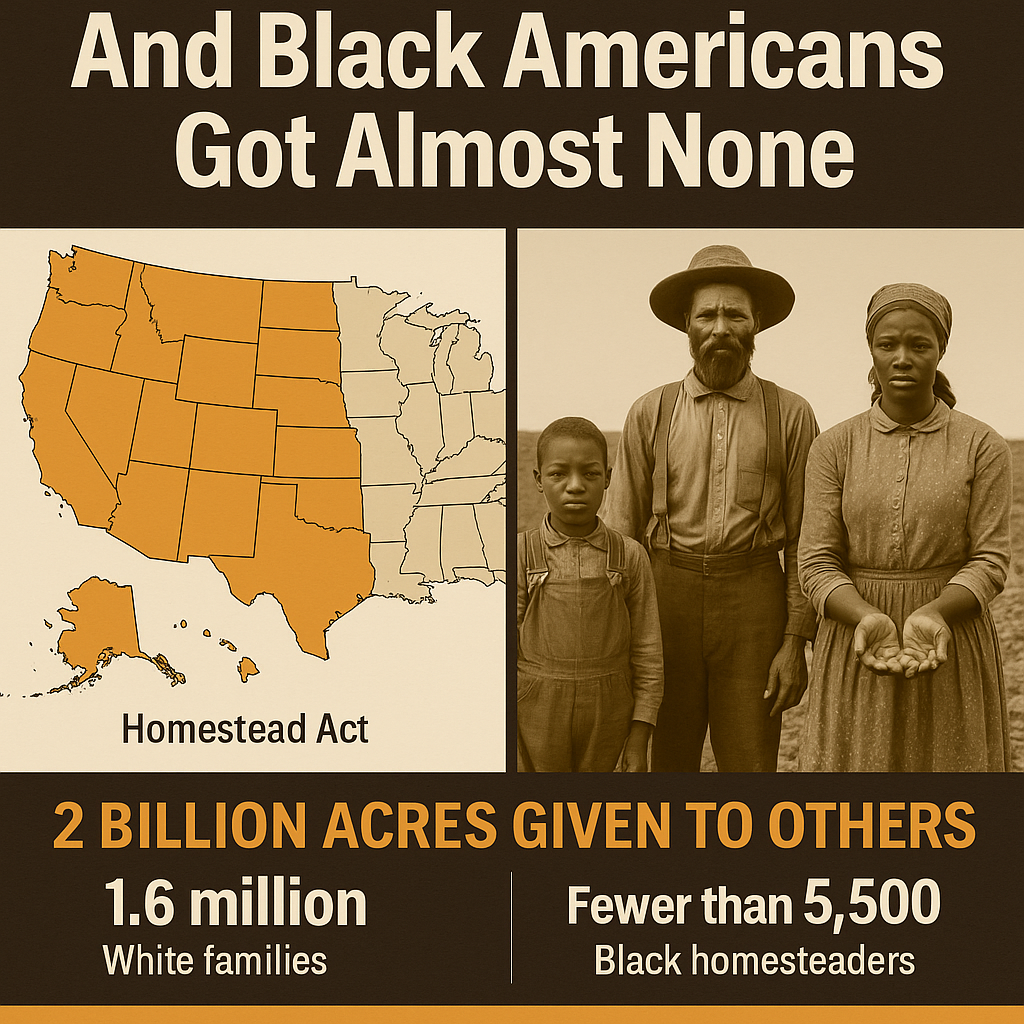By Independent Rob | Black Perspective News
Introduction
Black land ownership
For more than a century, the wealth of America has been measured in acres — not dollars. From the Homestead Act to railroad grants, the U.S. government handed out more than two billion acres of land to white settlers, corporations, and universities. That land built fortunes, legacies, and entire industries.
But there’s one group who never got their share: Black Americans.
Even after slavery ended, systemic racism, federal policies, and legal rulings — most notably the Dred Scott decision of 1857 — ensured that Black people could not claim or retain the land that powered America’s prosperity.
The Dred Scott Decision: A Foundation of Exclusion
In 1857, the U.S. Supreme Court ruled in Dred Scott v. Sandford that Black people, free or enslaved, were “not citizens of the United States” and therefore had no legal standing to claim property or sue for their freedom.
This decision legally stripped Black people of access to one of the most vital resources in the nation — land — and laid the groundwork for more than a century of systemic exclusion.
“They had no rights which the white man was bound to respect.”
— Chief Justice Roger Taney, 1857
Even after the Civil War, that ideology persisted in new forms — through politics, policy, and violence.
Two Billion Acres Given to Others
Between 1862 and 1934, the U.S. government transferred roughly 2 billion acres of public land — nearly the size of the entire continental United States — to settlers, railroads, and corporations.
Under the Homestead Act of 1862, white families received 160-acre plots essentially for free. In total, over 1.6 million white families built generational wealth from that opportunity.
Black Americans? Fewer than 5,500 Black families ever successfully claimed homestead land.
Even the Southern Homestead Act of 1866, created to open up land to freed slaves, was crippled by bureaucracy, violence, and racism. Most of that land was sold to white speculators or reclaimed by the federal government.
“Forty Acres and a Mule” — The Promise That Vanished
After emancipation, Union General William T. Sherman issued Special Field Order No. 15, setting aside 400,000 acres of coastal land in Georgia and South Carolina for formerly enslaved families — roughly 40 acres per family.
But after President Lincoln’s assassination, President Andrew Johnson reversed the order, returning land to former Confederate owners.
Freedmen who had begun farming their own plots were evicted, often by armed force.
The land that could have built Black wealth became another brick in the wall of systemic poverty.
The Cost of Exclusion
Land ownership is more than property — it’s power. It’s collateral, inheritance, and community stability.
While white homesteaders built wealth that still passes through families today, Black Americans were forced into tenant farming, sharecropping, and labor dependency — often on the very land their ancestors worked for free.
Today, the effects are measurable:
- In 1910, Black farmers owned about 15 million acres of land.
- By 2025, that number is less than 3 million acres — a drop of nearly 85%.
- Meanwhile, white farmers own more than 95% of U.S. agricultural land.
That loss represents hundreds of billions in missed generational wealth — all because Black Americans were systemically denied land access, ownership protection, and inheritance rights.
A Debt Still Unpaid
The American dream was sold as an opportunity for all, but it was built on selective generosity.
From Dred Scott to Jim Crow to redlining, the system consistently said: This land is not for you.
Reparative justice today must start with truth — that America’s wealth was literally built on land Black Americans were never allowed to own.
Until that history is confronted, the gap between promise and reality will never close.


